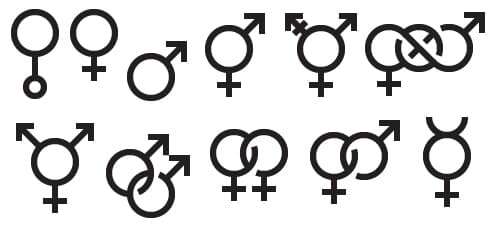Charles Peirce, an American philosopher writing in the 1800s, categorised the signs we use to communicate ideas with each other into three types: icon, index and symbol. The main difference between each broad category of signs is the quality of the physical relationship between the signifier and signified.
Icons have obvious physical connections between the signifier and their meanings. For instance, the people and places in a photograph will probably look like their real life counterparts. By contrast, symbols are defined by culture and do not need to resemble their mental concepts. There is no reason why blue, for example, is used to signify masculinity. It is simply tradition and convention. Finally, indexes have some factual relationship between the signifier and signified, such as a thermometer used indicate the temperature or the smells coming from a kitchen will suggest what is being cooked.
Importantly, Peirce recognised a single sign could easily have the characteristics of all three categories.
An icon has a close physical resemblance to what it signifies. Consider the following communication icons:
![]()
You should be able to recognise the newspaper from the first icon because it has a similar shape and the rectangles represent a masthead and image. The lines signify the story.
It might be a little old-fashioned, but it should be fairly obvious that the second icon refers to a television. Can you work out what the other three icons represent?
At the other end of this spectrum, a symbol has no resemblance between the signifier and signified at all. It is our framework of knowledge which helps us understand the meaning of these signs. Perhaps the best examples of symbols are those we use to identify gender:

These symbols might have some historical context or significance, such as how the male and female signs are derived from the classical symbols for Mars and Venus, but there is very little connection to the constructs they represent. In fact, the most of the words you are reading now are also symbols which have no physical relationship to the mental concepts they convey.
The third category identified by Peirce was the index. This type of sign will show some sort physical relationship with what is represents and point towards its meaning, but they will not be directly related to the signified. These signs are often caused by what they signify.

Paw prints are an excellent example of an indexical sign
Look carefully at the following signs and decide whether they are iconic, indexical or symbolic: